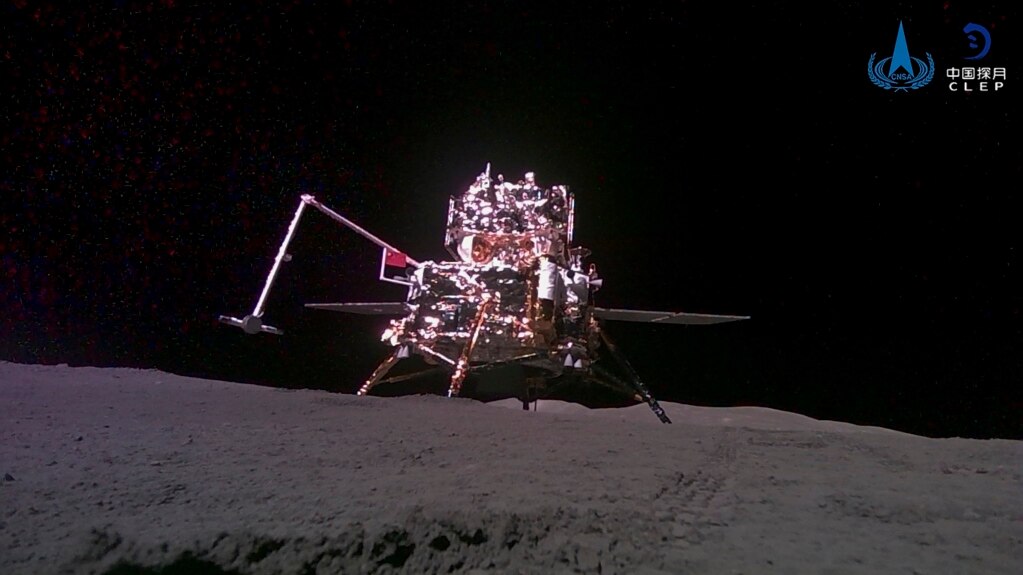A Chinese spacecraft has returned to Earth with rock and soil samples recently collected from the moon.
A parachute Tuesday floated the unmanned Chang’e-6 capsule back to earth in China’s Inner Mongolia area. The return flight came after Chinese space officials announced earlier this month that the spacecraft had successfully gathered the samples and stored them for the trip.
“I now declare that the Chang’e 6 Lunar Exploration Mission achieved complete success," said Zhang Kejian, the director of China’s National Space Administration. Zhang spoke during a televised news conference after the landing.
Chang’e-6 launched May 3 and touched down on the lunar surface about one month later. The spacecraft landed in an area near the moon’s South Pole called the Aitken Basin. The area is known as the far side of the moon because it always faces away from Earth.
The successful return makes China the first country to ever collect and bring back lunar samples from the far side of the moon. In a statement, Chinese President Xi Jinping called the return a “landmark achievement” in his country’s space development effort.
The American space agency NASA describes the Aitken Basin as the largest impact basin on the moon. The area is believed to have formed more than 4 billion years ago.
Chinese space officials said earlier that controllers on the ground had directed the space vehicle to use its drilling equipment and other tools to capture the soil and rock samples. The operation was expected to produce up to two kilograms of moon material.
The samples will be closely examined by Chinese scientists. They said they expect them to include 2.5-million-year-old volcanic rock and other material. Scientists hope the samples will help answer questions about the differences between the moon's two different sides.
It is not the first time a Chinese spacecraft has collected material from the lunar surface. The country’s Chang'e 5 spacecraft traveled to the moon in late 2020. It successfully brought back about two kilograms of moon rocks and dust.
That mission was carried out in an area known as Oceanus Procellarum. It sits on the western edge of the near side of the moon. That area is believed to have had intense volcanic activity in ancient times.
China is the third nation to successfully collect lunar samples, following the United States and the Soviet Union. Before China’s latest efforts, the last collection mission happened in 1976, when an unmanned Soviet spacecraft collected 170 grams of moon material.
I’m Bryan Lynn.

